Photos: Hellenic Ministry of Culture
In the course of the excavations in Amphipolis archaeologists have completely uncovered the tomb anteroom. Its walls are lined with white Thassos marble and its upper part is decorated with Ionic architraves with traces of red and black paint on their waves.
The facade of the anteroom has been fully uncovered after the removal of the last blocks forming the sealing wall. According to archaeologists, this is a very original composition of tomb architecture that dates back to the last quarter of the 4th century BC.
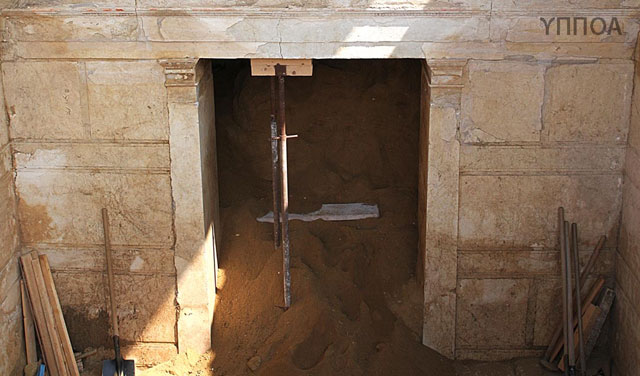
The facade is decorated in the same way as the side walls – with white frescoes that resemble the marble decoration of the tomb courtyard. The maximum distance between the pilasters is 1.67 m and the typology of the door shows that there were no panels and it was just an entrance.
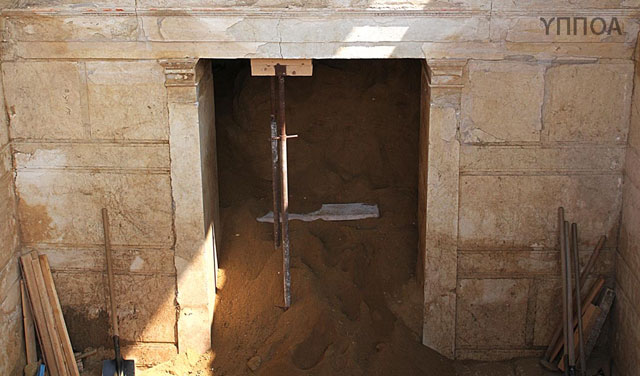
Inside the anteroom, under the marble Ionic architrave and all along the side walls, archaeologists have discovered an inside marble support. At a distance of 6 m from the entrance, they have discovered the upper part of a marble wall, a piece of the left side of which is missing. Behind the wall, there are two more rooms.

A marble architrave with cornice has been discovered on the wall too, which is decorated with embossed rosettes that are located at the level of the architrave of the side walls.
Archaeologists believe that there is a second entrance in this wall, which leads to the interior of the tomb. It is expected that the amounts of soil that are behind the door will be removed in the coming days.
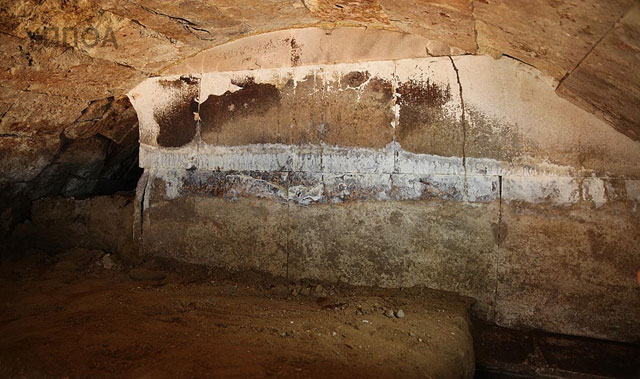
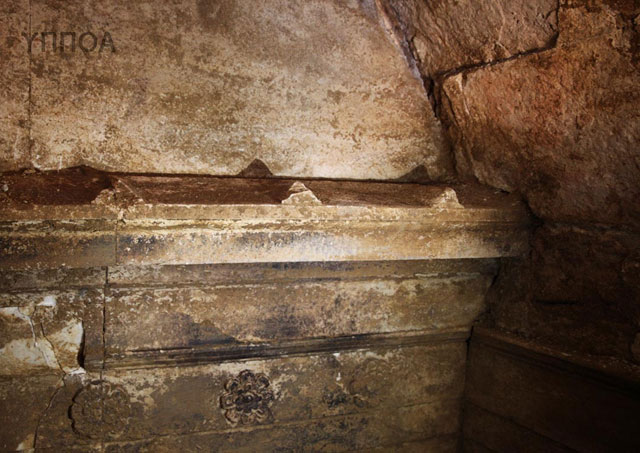
The more archaeologists are approaching the interior of the tomb, the more the interest in who was buried there is growing. According to archaeologist at the University of Bristol Nicholas Saunders, whose academic and writing career is inextricably associated with the life and death of Alexander the Great, there is no probability of the great military commander resting in Amphipolis.
In an interview for the Greek "Ethnos" newspaper Saunders states, "Indeed, there is a very attractive probability of the tomb being designed and built for him, accounting for the fact that his body was to be carried to Ancient Macedonia after the members of the Ptolemaic dynasty were able to take it while it was transferred to Egypt. The problem with this assumption is that the only place where Alexander could have been buried was the ancestral royal tomb at Vergina. It is not possible that he was buried in any other place in Ancient Macedonia, Amphipolis was a city of secondary importance compared to its capital Aegae (now Vergina – author’s note). For the same reason it is not possible for the tomb there belonging to any other member of the royal family," says Saunders.
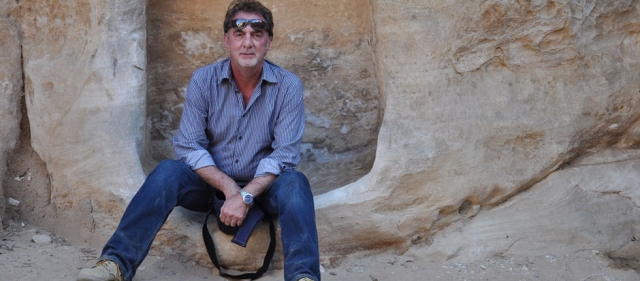
According to him, a distant member of the dynasty or one of the generals in the army of Alexander was laid there. "One of his close associates with high military rank was most likely laid in the tomb in my opinion. Perhaps admiral Nearchus, who led his fleet?! I am sure Greek archaeologists can give a more founded opinion on the matter. Anyway, things that modern people consider as very logical had a very different interpretation two thousand years ago. It is therefore not excluded to find in the tomb something that we do not expect in any way," says Saunders.
His assumptions about the deceased in the tomb in Amphipolis are three, as follows:
Nearchus - One of the admirals of Alexander the Great, whose family settled in Amphipolis when he was a child. Therefore, he could be considered as one of the greatest figures of the city, which in turn could provide him with a magnificent tomb. Furthermore, Nearchus was not a member of the royal family and could not have been buried in the capital city of Aegae.
Alexander’s wife Roxana and/or son Alexander IV, the only legitimate heir of Alexander the Great, were captured and killed by Cassander in Amphipolis in 309 BC. "As Roxana had no blood ties to the royal family it was not required to bury her in the capital and she was probably buried in the region of Amphipolis. As for the grave of her son, who knows? It can be assumed that he was probably buried with his mother. And his tomb may be in Aegae /Vergina," says Saunders.
Alexander's sister Cleopatra - According to the professor, an interesting fact is that Cassander also killed Alexander’s sister in 309 BC, probably in Amphipolis. In his opinion, although the tomb might belong to her, probably she was buried in Aegae as a member of the royal family.
As for the tomb of Alexander the Great, according to Saunders, it is in Egypt. "I think its foundations are at a very great depth below the modern city of Alexandria in the place which I describe in my book. But it is very difficult to assume that many things have been left from it. As for the bones of Alexander, things are different. They could have been burnt out or hidden elsewhere in Egypt, for example, in the vast cemetery of the Ptolemaic period, which is located in Bahariya Oasis (The Valley of the Golden Mummies). My favourite explanation is that his mummified body was broken into pieces that were then sold as amulets with superpower in Alexandria. Although many of its residents were subsequently converted to Christianity, they continued to respect him. This practice was very popular and my opinion is that it has launched the Christian tradition that considers the bones of saints as sacred objects. Thus, the body of Alexander still could be returned, albeit in small pieces, to the residents of his city."